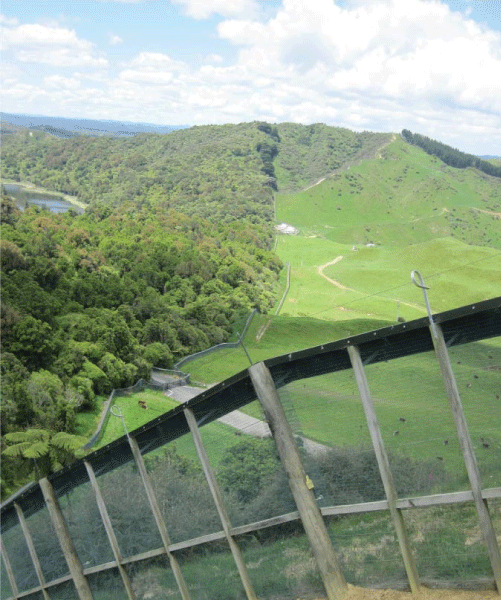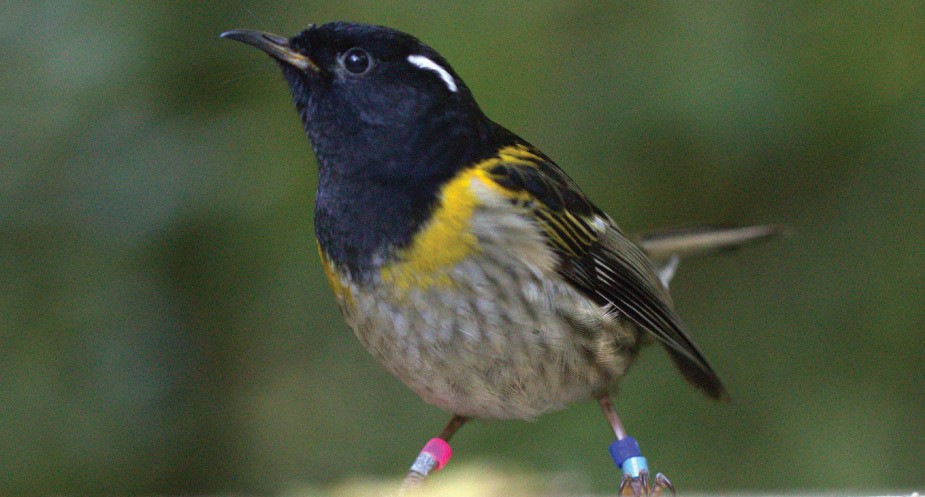Protecting a Taranaki treasure
It’s a beautiful thing when farmers and the community come together and join forces to restore a local jewel of the environment, providing a home for hundreds of native plants and threatened wildlife.
Caring for their land and their animals is important to our farmers – after all, and obviously, it’s how they make their living.
But many farmers take this a step further, going above and beyond to help protect and preserve New Zealand’s natural environment and wildlife for the benefit of future generations. Taranaki sharemilker Steve Kane is one of those farmers.
Steve is the Chairman of the Rotokare Scenic Reserve Trust, a community-led conservation-based charitable trust in the heart of Taranaki. The trust is the guardian of the 230-hectare Rotokare Scenic Reserve, a forested hill-country catchment with extensive wetlands and a 17-hectare natural lake, 12 kilometres east of Eltham.
The Trust relies on volunteers to pitch it and help with the conservation work.
The Trust was established in 2004 due to concern for the declining state of the reserve, and focuses on restoring, protecting and enhancing the reserve’s ecosystem.
Steve is one of three local dairy farmers on the Trust Board, and others are involved as committee members, volunteers and donors.
Steve says the reserve and the surrounding area is very important to the community.
As farmers, we want to help out and do our bit”, he says. “We care about the community and we care about what’s happening in our own back yard. We need to make sure that we’re doing something to improve the land, like planting trees and plants to provide shade and habitats.
Steve got involved after being shoulder tapped at a local working bee and after visiting the reserve he was keen to offer his time.
“It’s a place that almost consumes you in a way and it’s actually very therapeutic. The chance to get off the farm and do something for the environment is essential.
"It keeps your brain fresh and helps stop you from getting stale. Two things you don’t need at the reserve are your wallet and your cellphone.”
Simon Collins is the reserve’s Sanctuary Manager and says pest control is a key part of the restoration work.
“Before the Trust was established the reserve was full of pests like possums and rats. We’ve managed to eradicate 12 pest species and have built an eight kilometre fence around the entire reserve to help keep it that way.”
 An eight kilometre fence helps to keep pests out.
An eight kilometre fence helps to keep pests out.
The area is home to hundreds of native plants and threatened wildlife including kiwi, hihi (stitchbird), tieke (saddleback), popokatea (whitehead) and toutouwai (North Island robin). Simon says the populations of these species are increasing and thriving, and not just within the reserve.
“We have what we call a ‘halo’ area around the reserve and the wildlife isn’t just confined to the sanctuary. It’s overflowing into the surrounding environment, bringing nature back to the community and farms that border the area.”
The Trust’s restoration work also includes key social elements. The lake is popular with water skiers in the summer and local schools hold field trips to the reserve to help teach the next generation about the importance of protecting the environment.
“Just as the reserve is important for the wellbeing of the birds and other wildlife, it’s also important for the wellbeing of our community”, says Simon. “We have between 200 and 300 people volunteering each year, and we consider ourselves a family, looking after the environment and each other.”
For more information on the Trust and the sanctuary visit www.rotokare.org.nz, email contact@rotokare.org.nz or call (06) 7648500.
 The once threatened hihi is among the species now returning in numbers.
The once threatened hihi is among the species now returning in numbers.

